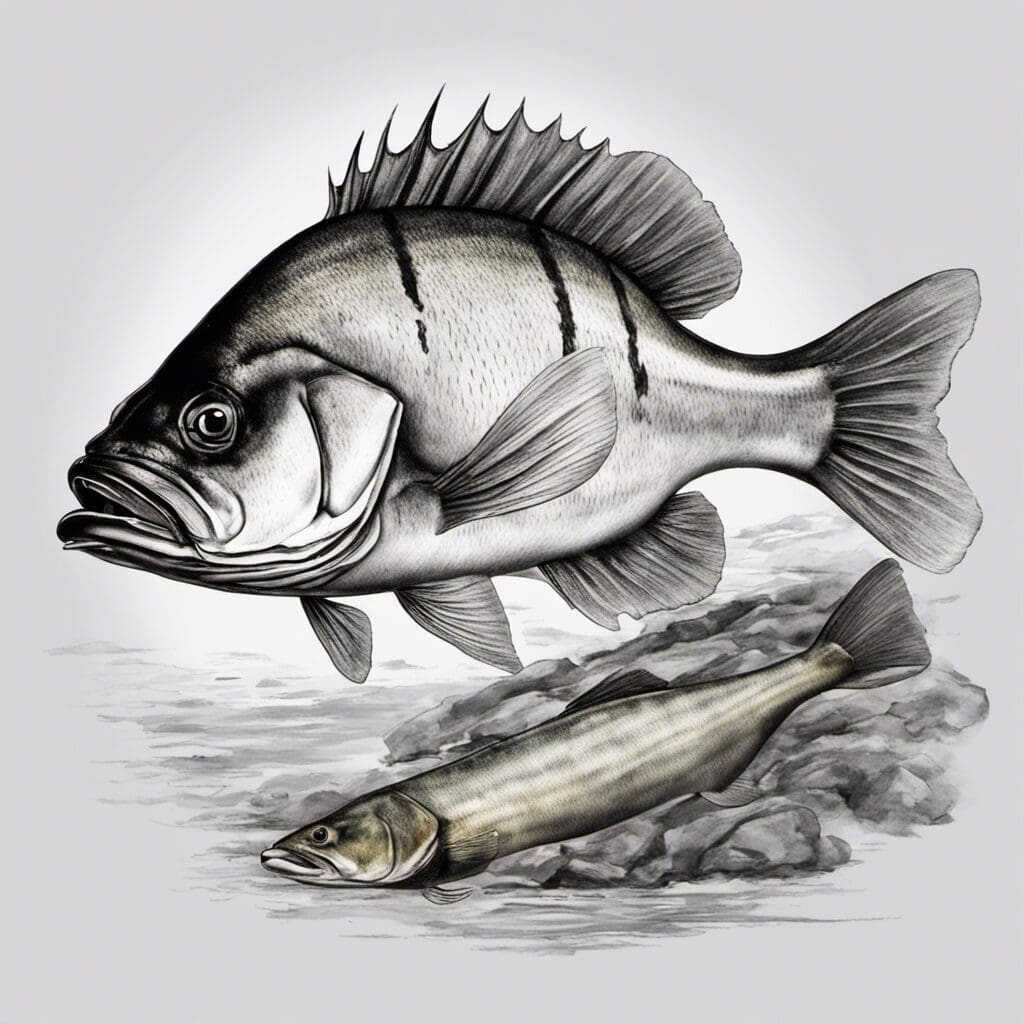Introduction
Commonly known as the Seabass, its scientific name is Dicentrarchus labrax which is part of the Moronidae family.
Conservation Status
Current status
The Seabass (Black) is listed as ‘Least Concern’ on the Global Species Database, indicating it is not currently threatened or endangered.
Conservation efforts
There are no specific conservation efforts targeted at the Seabass. However, it benefits from general marine conservation initiatives.
Statistics
| Length (Average) | 70 cm |
|---|---|
| Length (Range) | 40 – 100 cm |
| Weight (Average) | 5 kg |
| Weight (Range) | 2 – 15 kg |
| Average Lifespan | 15 years |
Distribution
Regions/Countries
The Seabass is commonly found in the eastern Atlantic Ocean, the Mediterranean Sea, and the Black Sea.
Migration patterns
The Seabass typically migrates towards coastal waters during the summer and returns to deeper waters during the winter.
Habitats
Water type
This species prefers salty and brackish waters.
Depth range
The Seabass is usually found in waters up to 100 meters deep.
Temperature range
It thrives in a temperature range of 8 – 24 degrees Celsius.
When and Where to See
Seasonal patterns
The Seabass is most active during the summer, in coastal areas.
Time of day
Seabass are most active during early morning and late evening.
Best Fishing Locations
Top 10 Places
- The English Channel, England
- Bay of Biscay, France
- Bass Strait, Australia
- Thames Estuary, England
- Plymouth Sound, England
- Cardigan Bay, Wales
- Isle of Wight, England
- Lyme Bay, England
- Anglesey, Wales
- Adriatic Sea, Italy
How to Catch
Preferred bait or lures
Lugworms, peeler crabs, and mackerel strips are known to be effective bait for catching Seabass.
Fishing techniques
Fly fishing, trolling, and bottom fishing are commonly used techniques.
Identification Guide
The Seabass is distinguished by its silver-grey body, relatively large scales, and a prominent black spot on each shoulder at the start of the lateral line.
Culinary
How to Cook
Seabass can be grilled, poached, baked or fried, but is particularly popular for barbecue due to its robust flavor and firm texture.
Taste Profile
Seabass is known for its rich, sweet, and buttery flavors.
Nutritional Information
Seabass is a good source of lean protein, Omega-3 fatty acids, and is low in fat.
Behavior
Seabass are known for their shyness and the older ones are typically solitary while younger ones prefer to swim in schools.
Predators and Threats
The principal predators of the Seabass are larger fish species, marine mammals, and birds.
Cultural / Historical Significance
In some cultures, Seabass is associated with fertility and abundance due to its fast growth and prolific breeding.
References and Further Reading
- Fishbase – Seabass
- Britannica – Sea Bass
- World Sea Fishing – Bass

